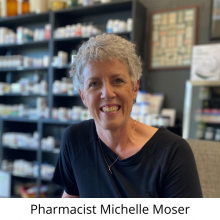Does Low Dose Naltrexone (LDN) Help Mold Toxicity?
The other next question is what about black mold toxicity? Have you ever seen LDN help with that? If so, are there other meds that are used to help with this problem?
So again, black mold is a mold, it's not uncommon to have these forms of toxicity in certain geographic locations around the globe. It is still a form of fungal overgrowth and so whether it's in the small bowel, whether it's in the sinuses, in the large bowel or somewhere hiding another way even if we are going after black mold specifically, there could be other offenders. Other fungal types as well because often they coexist with each other.
LDN can help but it is not the only therapy, as sometimes we have to identify what other medications can be used. Are we using a very specific anti-fungal? Yes, there is a process to go about detoxifying and then ridding the body of the toxicity of that toxin, and that can take time. I have seen, in certain fungal overgrowths, a combination of medications that are being used like Nystatin in high doses. Even an Azle anti-fungal. Sometimes instead of an Azle we'll use amphotericin B orally. It just really depends on what is going to be cultured in your situation; What is sensitive to these medications and then it takes time. What I've also seen is that sometimes we have to use a combination of medications called biofilm disruptors to actually change the lining of the gut so that we can see things absorbed and that includes LDN. Sometimes LDN will help a little bit but depending on the dosage form of LDN we may actually have to kind of postpone and not use LDN right at the get-go. Sometimes we need to add it on later after we've used medications to go after the toxin and also the side effects and help clean that up and then also help to change what's going on somewhere in the gut.
When I say the gut, the gastrointestinal system actually starts here. I mean, the mouth and the nose are the portals as things go into the body. The sinuses are an extension of that. Some people actually have black mold in their throats. It could actually go into their esophagus, down even by their lungs or in their lungs, and then start in the GI tract where it goes into the stomach, the small bowel, the large bowel any place in between. So in some ways, it's important to know where it is so we can go after it because when you use things orally you may not necessarily have enough medication to then be transferred to all of these places. Sometimes we may actually have to use a nasal spray if it's sitting in the sinuses or a very specific sinus rinse. It's important to identify those areas, but LDN does help to reduce the inflammation. It can sometimes when the inflammation is reduced, you can actually see a bloom from that, it's not very common, but it can happen. Sometimes you feel worse before you get better. But a lot of times we have to use a triage or a multi-level way of medicating this and sometimes it takes months.








